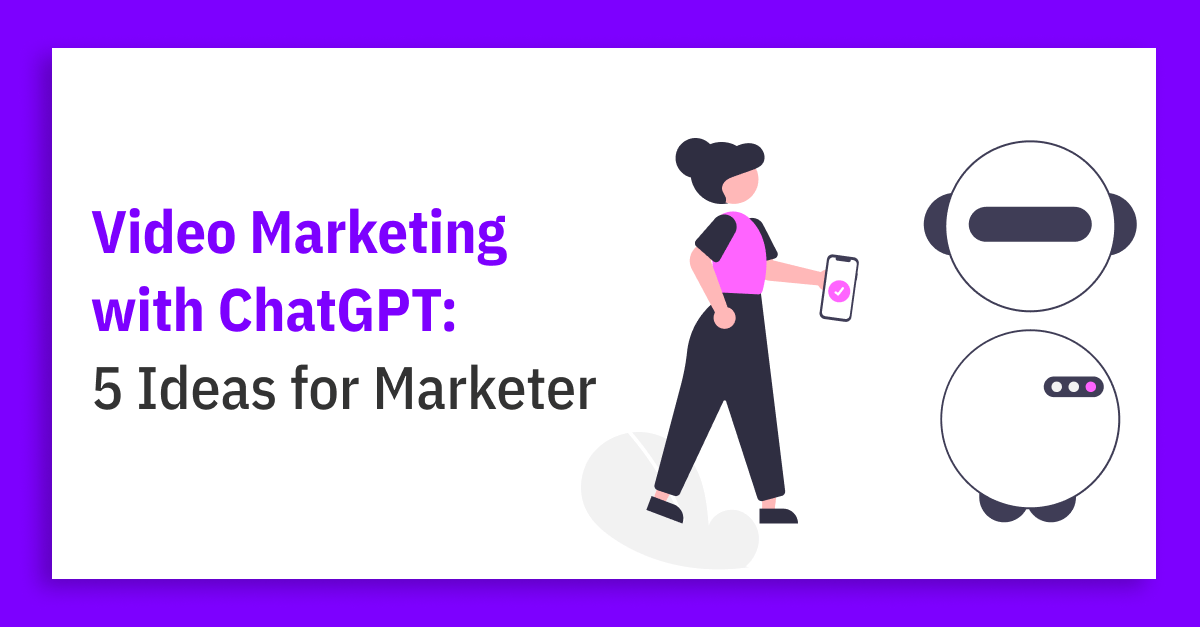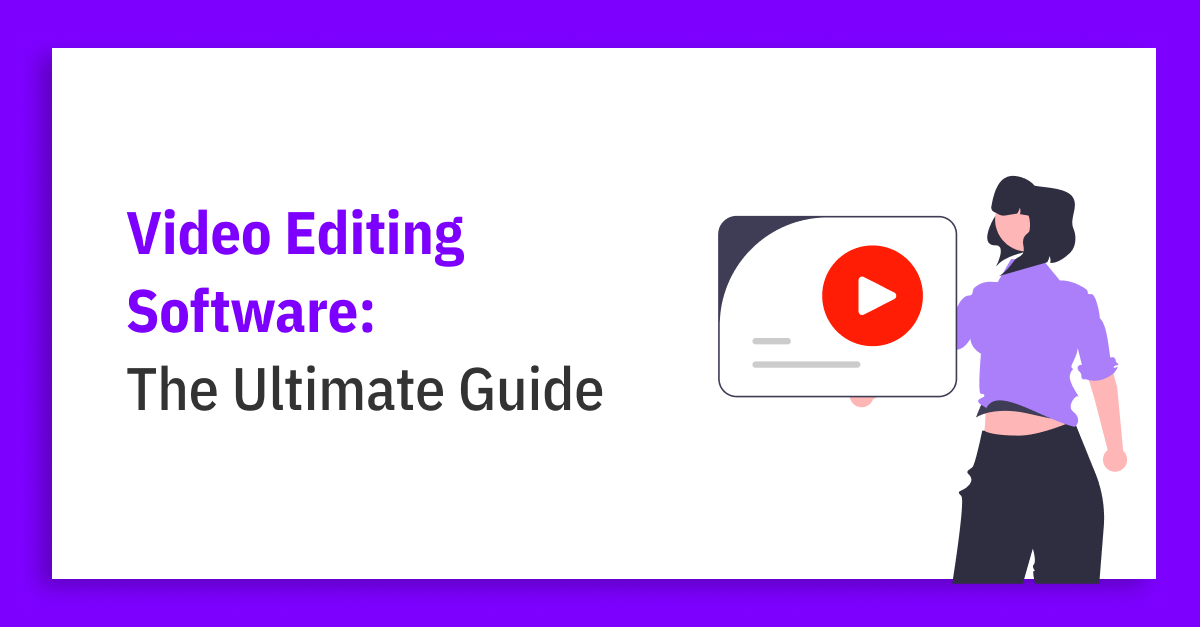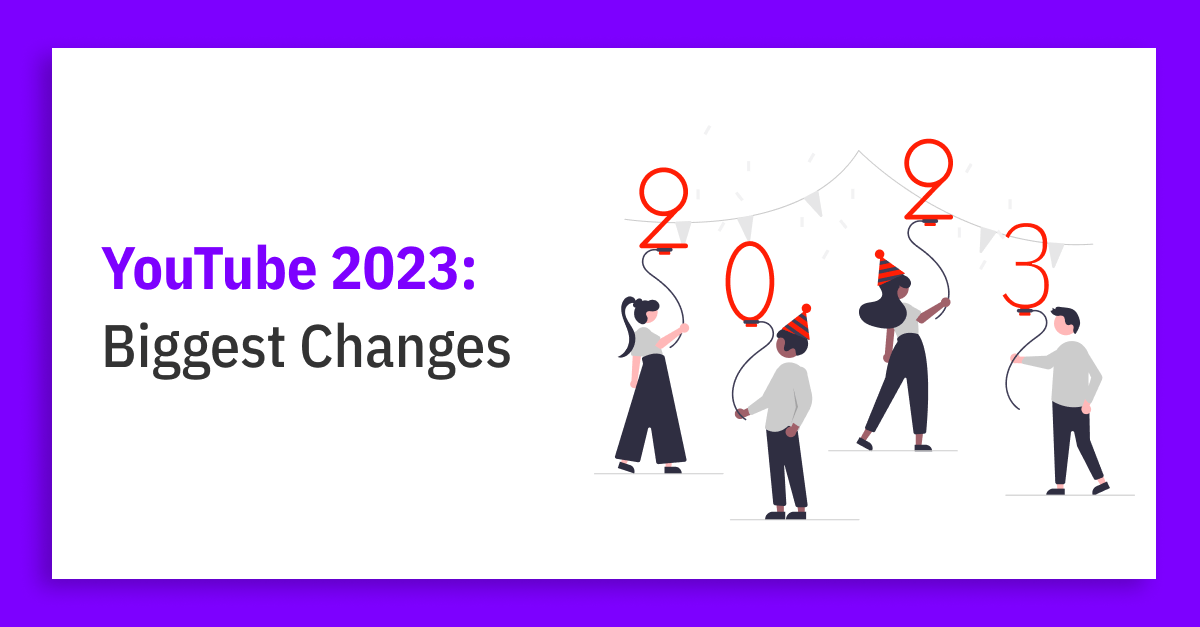March 2, 2023
YouTube is big for brands. 56 of the world’s top 100 brands have 10 YouTube channels or more. 99% of all top brands do YouTube marketing.Yet many of these brands fail to reach the 2 billion people that watch YouTube every month. Over 50% of the videos produced by the Top 100 global brands have less than 1,000 views! This is because they focus more on video production or ads. And less on video marketing powered by a proper strategy.So let’s have a look at the groundwork. A good global YouTube channel strategy takes into account two things:
- the languages your target audience speaks and
- the organizational opportunities of your company.
In this article, I’ll explain the YouTube strategies that big global brands follow regarding languages and help you decide which one is right for your brand. You can also check out the video that we’ve made on this topic:
First, let’s understand the content marketing approaches that big global brands follow. Video content on YouTube should follow the same principles as all other types of branded content – no matter if it’s on Facebook, Instagram, or on your website.Global brands here follow two different approaches: a centralized and decentralized content marketing approach. These two approaches differ in two ways.

First, how languages are managed, and second who is in the content strategy driver seat: the corporate headquarters or rather the local marketing managers.
Centralized Approach for YouTube
A centralized approach towards YouTube features these core characteristics:
- Your corporate headquarters is in the YouTube driver seat
- Video content is English only
- Translations are optional (CC, titles, descriptions).
This way it’s easy to create videos. The corporate headquarters is in charge and publishes them on one YouTube channel only. The audience around the globe can turn to this channel or discover its video content when searching in English.

With English as your channel language, you reach a global audience of over two billion people who speak or understand English – at least as a second language. This way you save on translating video content which costs a lot of money.Following the centralized approach, you can choose between two different setups. The first setup features only one English-language channel. This is your main brand hub.The second setup also features an English language brand hub, yet this main YouTube channel gets supported by supplementary English channels.

Let’s explain the setup with the one channel first since it’s the easiest to understand.
a) One YouTube Brand Hub
This setup is mainly used by global entertainment brands or companies having a startup background.Brands that follow this strategy are for instance Airbnb, Canva, Disney’s Mickey Mouse, Nobel Prize, global sports associations like ATP, Olympic Games, and FIFA, or the cosmetics brand Dr. Squatch, which is known for its funny (and utmost successful) YouTube ads.With their YouTube videos, all these brands reach a global audience right from the start. And they achieve the greatest common multiple with the least possible effort.

Some of these global brands probably chose this One Size fits all strategy because, in the beginning, they didn’t even have regional subsidiaries in different countries supporting customers in different languages. They just needed to start small.Yet also established brands sometimes feature one English channel only: like Lavazza or the big Swiss private bank Julius Baer. And they do have offices around the globe.So what are the Pros of this one-channel strategy:
- Maximum Impact, Minimum Effort: no need to worry about various languages and translations. Everything is done in English for one big target audience.
- Speed: you can move fast, with few dependencies on stakeholders.
- Ease of management: processes can be centralized (from planning to production and publishing).
- Aligned content strategy: content strategy can be easily aligned. Since not many stakeholders are involved.
- Algorithm-friendly: since all user signals hint to one YouTube channel and the users don’t experience any dead-ends caused by published videos they do not understand the YouTube recommendation algorithm and the Google algorithm is more likely to feature your videos in search results.
- Bigger subscriber count: the potential to build accounts with high numbers of followers because i.e. there’s only one account to follow.
The main disadvantageof the one-channel strategy is that your content isn’t understood by everyone. English only channels may turn off users who don’t speak English (and of course there are differences even between US and British English). YouTube’s translation tools help with this. But they aren’t perfect. Your video’s voice-over remains in English – even if CC, title, and description can be translated.Moreover, you can’t adapt to cultural differences and differences in promotional activity (e.g. different types of products might attract different types of customers who might again need different contents).
b) Brand Hub with Supplementary Channels
To better address the above-mentioned need of offering different types of customers different types of video content, you can decide to add supplementary channels to your main YouTube channel.

These additional YouTube channels can be tailored to target groups – one YouTube channel for each target group. Or tailored to company divisions, i.e. one YouTube channel for each division or product.
”Targeting a passionate niche audience can often be more effective than going after the masses.”YouTube Creators
The best example of this strategy is Red Bull, the energy drink company. Red Bull has the biggest YouTube brand channel in the world with around 10 million subscribers. The channel grew this strong mainly with YouTube videos on extreme sports.Yet Red Bull is aware that the interests of its target audience are diverse. That’s why they set up dedicated channels for bike fans, motorsports, winter sports, skateboarding but also dance and gaming. Each of them featuring massive subscriber counts and following a content strategy that’s tailored to the interests of the target audience.

The main advantage of this YouTube channel setup is that it’s tailored to the interests of various target groups.However, there are certain limitations to this strategy as well:
- Not understood by everyone. Yet again: you don’t reach audiences not speaking English – YouTube’s Translation Tools help but aren’t perfect.
- More difficult to manage since you have different video marketing teams.
So much for the 2 ways to reach a global audience with a centralized approach – driven by the headquarters. With the English language only.But of course, there’s also another approach: a decentralized strategy for your global YouTube marketing. And this way you go for multiple languages.
Decentralized Approach for YouTube

With a decentralized approach, both the headquarters and local marketing managers work together on video production.To make this setup work you need guidance, trust, and support from your corporate headquarters and the market knowledge from the marketing departments in the different countries your company is operating in.This market knowledge mainly refers to unique cultural characteristics, language specifics, or other market needs that are typical for the region.The high prioritization of local markets can also be seen in the YouTube channel setup: the brand hub channel, which is also held in English, gets accompanied and supported by a wide range of YouTube channels that are run in the language of the region or local market.
c) Brand Hub with Regional Channels
Let’s explain the core characteristics of this Think Global. Act Local setup:
- You have a Global English Brand hub
- Supported by YouTube channels tailored to countries or languages.
The supporting channels aren’t focused on target groups. That’s important to mention. So this setup is not user-centered but rather reflects the internal architecture of the organization. With all its disadvantages.This approach often gets used by brands that want to reach a global audience yet also want to take into account regional differences.
”If your brand varies slightly in different countries/regions, this strategy allows you to incorporate those differences into your channel strategy.” YouTube Help
Find below a list of big FMCG and B2B brands that fall into this category.

Examples include Apple, Samsung, IKEA, cosmetics giant L’Oréal,Coca-Cola, Allianz, Paypal, Starbucks automotive brands like Mercedes-Benz or Toyota, B2B brands like Siemens, or the entertainment brand Star Wars.Video production is mostly done on both headquarters and country levels. The corporate headquarters creates videos, mostly on universal topics that are relevant to all markets. These videos then get published on the main YouTube channel, the global brand hub.But some videos coming from headquarters might also get translated and published on the supporting country channels. This is mostly true for product videos that get launched across the globe.So, for instance, if Apple or Samsung launch new devices, the original English video gets translated into German, Japanese, Spanish, etc. And then it’s published on the language-specific YouTube Channels.Dutch bank ING is a good example of this strategy. The English brand hub features financial results and the overall strategy. Local markets run their own YouTube channel – mostly powered by ads.

The same structure can be observed at HILTI Group, based in Liechtenstein.

But not all brands follow this strategy. Nutrition brands Maggi and Knorr feature a bunch of regional YouTube channels but lack a brand hub. Don’t they need one?Miele, Tchibo, or Nescafé, on the other hand, seem to have a brand hub but it isn’t English. Miele’s and Tchibo’s YouTube strategies circle around German, Nescafé’s brand hub is Italian. Is this a smart move?
Pros and Cons
Let’s look at the advantages and disadvantages of this YouTube content strategy. The Pros of the decentralized approach are:
- No language barriers: videos can be understood by all people in a specific country.
- It’s easy to run local initiatives (e.g. country-specific promotions).
- You may have a more engaged, healthier community assuming your audience is following the correct localized account and the content suits the audience.
If all this is true all of your messaging will be relevant to your audience. And this is likely to lead to a more engaged, healthy community (–> more likes, more comments, more shares).Yet there are also disadvantages. And they are severe:
- Your channel subs and views get fragmented: it’s difficult to build up accounts with high audience numbers.
- Your channel setup is more expensive and complex to manage. Local editorial boards are needed.
- Messaging, tone of voice, and branding are hard to control. In reality, country-specific YouTube brand channels are mostly kind of chaotic. They tend to have low subscriber numbers and no clear content strategy.
- The channel setup is potentially confusing for your audience. This might result in the fact that your local audience may end up following the “wrong” account of another country.
Annex: One YouTube Channel with Multi-Language Playlists
I’m getting asked sometimes if it wouldn’t be smarter to just have one YouTube channel with playlists for all the languages. This makes channel management as well as consistent messaging and branding much easier. Brands that heavily rely on paid media like Nespresso for instance follow this approach.

My answer is: For Search, audience development, and a successful user journey this approach is just too short-sighted.
”Your channel will get posts, comments, and feed updates in many different languages. This may be confusing for your audience.” YouTube Help
Getting organic views or subscribers on YouTube will never work this way. You will always have to feed YouTube ad money to grow your channel AND you need a guy like George Clooney presenting your content ;-)That’s why I don’t consider this a strategy.
Summary
We’ve now explained the three main YouTube channel setups that you can choose when you like to reach a global audience with multiple languages. Let’s sum them up again:
- A centralized approach with one English channel (Airbnb).
- A centralized approach with one main channel that gets support by channels tailored to specific target groups (Red Bull).
- A decentralized approach with an English brand hub channel that gets supported by country or language-specific Youtube channels (Samsung, Hilti, or ING).
All of these setups have their Pros and Cons. If you’d like to discuss your setup just contact me on LinkedIn.

The 6-Step Guide to YouTube Content Strategy
How to build relevant video content for every business
FREE Download


